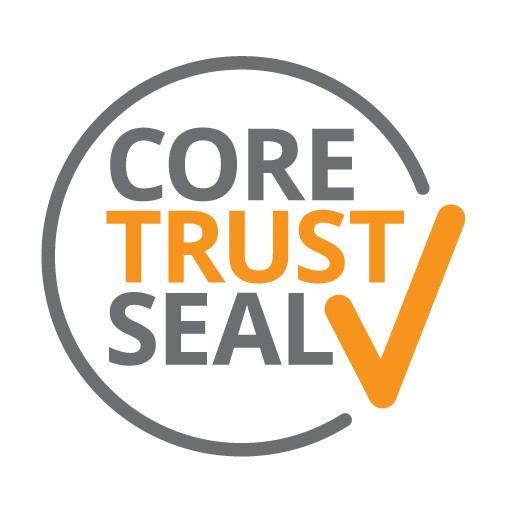Structural equation model of corporate social responsibility innovation, corporate image and corporate reputation towards corporate social responsibility innovation adoption among generation Y
| dc.contributor.advisor | Yubol Benjarongkij | th |
| dc.contributor.author | Chonnikarn Seritanondh | th |
| dc.date.accessioned | 2019-06-23T04:44:41Z | |
| dc.date.available | 2019-06-23T04:44:41Z | |
| dc.date.issued | 2018 | th |
| dc.date.issuedBE | 2561 | th |
| dc.description | Dissertation (Ph.D. (Communication Arts and Innovation))--National Institute of Development Administration, 2018 | th |
| dc.description.abstract | This research on Structural Equation Model of Corporate Social Responsibility Innovation, Corporate Image and Corporate Reputation towards Corporate Social Responsibility Innovation Adoption among Generation Y aims to (1) examine the social issues and the attributes of innovation in CSR innovation of three organizations; Charoen Pokphand Foods Public Co, Ltd., Siam Cement Group Public Co, Ltd. and PTT Public Co, Ltd. and (2) test the Structural Equation Model of CSR innovation, corporate image and corporate reputation towards CSR innovation adoption among Generation Y, generated by the researcher, with the existing empirical literatures and principles. Both qualitative research and quantitative research are applied to conduct a research. Firstly, the content analysis is applied to conduct CSR innovation news analysis of these three organizations, starting from 2014 to 2016. Then, 340 sets of questionnaire are distributed to collect data from Generation Y, who are 18 to 34 in age, living, studying or working in Bangkok and Vicinity. The content analysis results report 170 CSR innovation news in total from 2014 to 2016. In fact, community involvement issue was likely to be supported the most, reporting 36.55% of all six social issues, followed by environmental protection issue (28.74%) and injury prevention issue (16.55%). Apart from this, the analysis shows that the top three main attributes of innovation found in CSR innovation news were relative advantage, compatibility and risk (17.42% equally in each); however, the content analysis results of each organization show both similar and different findings. In addition, the overall results of Structural Equation Model analysis show that the model fit with empirical data (Chi-square = 100.632, df = 97, p = 0.380, Chi-square/df = 1.037, GFI = 0.970, AGFI = 0.941, CFI = 0.999, IFI = 0.999, NFI = 0.984, RMSEA = 0.011, RMR = 0.010). Corporate reputation has positive direct effect towards CSR innovation adoption at significant level. The value of effect is 0.74. Interestingly, corporate image shows positive direct effect towards corporate reputation at significant level. The value of effect is 0.93. Likewise, attributes of CSR innovation report positive direct effect towards CSR innovation adoption. The value of effect is 0.21. Besides these direct effects, corporate image has indirect effect towards CSR innovation adoption through corporate reputation. The value of effect is 0.68. Still, the model analysis of each organization report different findings. The finding indicates that attributes of CSR innovation have low value of positive direct effect to CSR innovation adoption among Generation Y consumers, compared with corporate image and corporate reputation variables. This is probably because Generation Y consumers believe that even though CSR innovation demonstrates all seven attributes of innovation that lead to acceptance, it is little important than a good corporate image and corporate reputation. In other words, no matter how attributes of CSR innovation are, they are less important than reliability and trustworthiness perceived by Generation Y consumers through a good corporate image and corporate reputation. In addition, corporate image happens before corporate reputation as people’s first impression towards the organization and then evaluate its execution over a course of time and create corporate reputation; therefore, corporate image is a variable that has positive direct effect to corporate reputation. In summary, if an organization has a good corporate image, its corporate reputation will be good accordingly. Then, it will probably show positive effect to CSR innovation adoption among Generation Y consumers. | th |
| dc.format.extent | 325 leaves | th |
| dc.format.mimetype | application/pdf | th |
| dc.identifier.doi | 10.14457/NIDA.the.2018.36 | |
| dc.identifier.other | b204841 | th |
| dc.identifier.uri | http://repository.nida.ac.th/handle/662723737/4465 | th |
| dc.language.iso | eng | th |
| dc.publisher | National Institute of Development Administration | th |
| dc.rights | This work is licensed under a Creative Commons Attribution-NonCommercial-NoDerivatives 4.0 International License. | th |
| dc.subject | e-Thesis | th |
| dc.subject.other | Social responsibility of business | th |
| dc.subject.other | Generation Y | th |
| dc.subject.other | ความรับผิดชอบต่อสังคม | th |
| dc.subject.other | ความรับผิดชอบต่อสังคมขององค์การธุรกิจ | th |
| dc.title | Structural equation model of corporate social responsibility innovation, corporate image and corporate reputation towards corporate social responsibility innovation adoption among generation Y | th |
| dc.title.alternative | แบบจำลองเชิงโครงสร้างของนวัตกรรมด้านความรับผิดชอบต่อสังคม ภาพลักษณ์และชื่อเสียงองค์กร กับการยอมรับนวัตกรรมด้านความรับผิดชอบต่อสังคมขององค์กรในกลุ่มเจเนอเรชั่นวาย | th |
| dc.type | text--thesis--doctoral thesis | th |
| mods.genre | Dissertation | th |
| mods.physicalLocation | National Institute of Development Administration. Library and Information Center | th |
| thesis.degree.department | The Graduate School of Communication Arts and Management Innovation | th |
| thesis.degree.discipline | Communication Arts and Innovation | th |
| thesis.degree.grantor | National Institute of Development Administration | th |
| thesis.degree.level | Doctoral | th |
| thesis.degree.name | Doctor of Philosophy | th |

